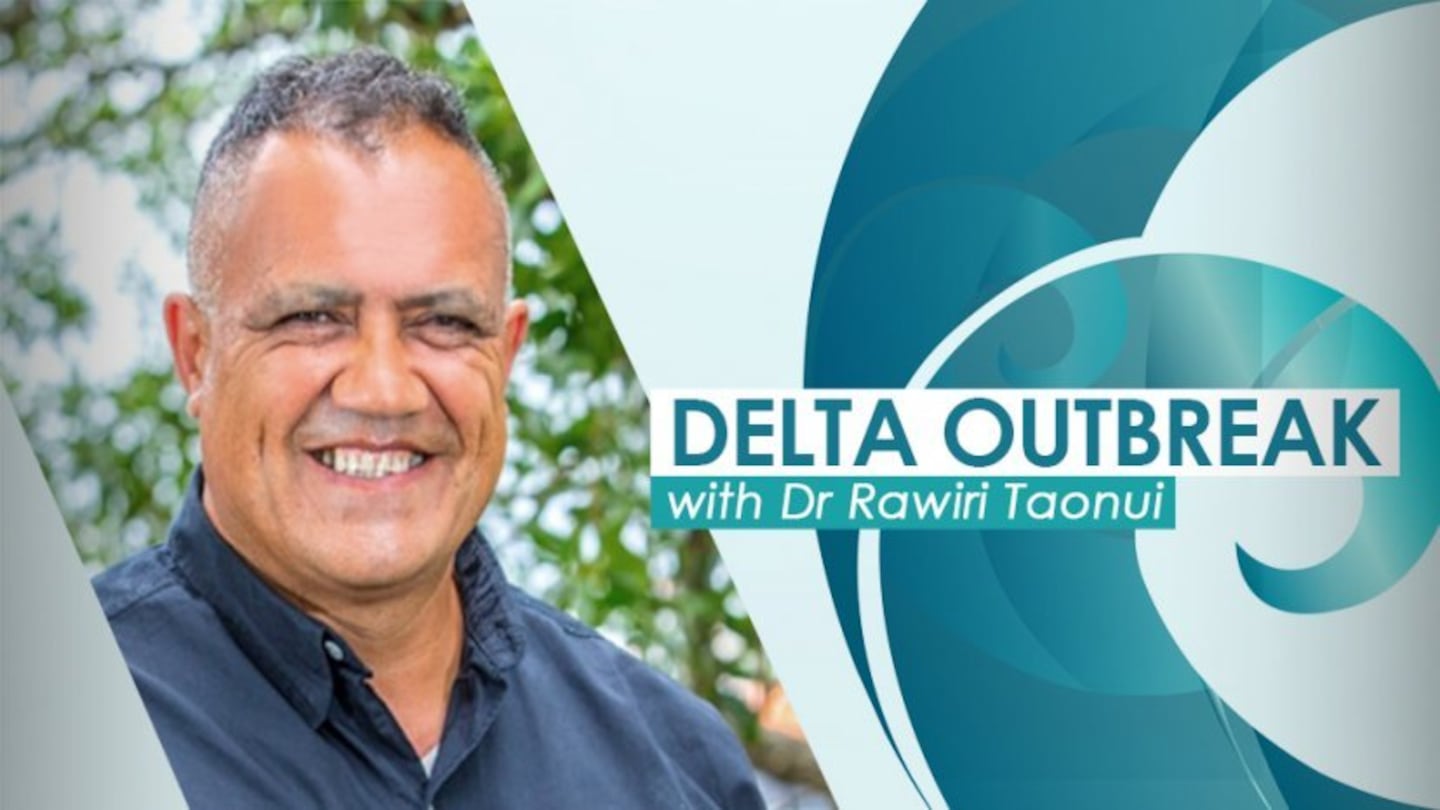Undoubtedly several of the so-called Freedom camp-ins around the country will become super-spreader events. When protestors return home, they will take Omicron with them.
Historically, before 1915, there was a significant anti-vax community in New Zealand. Much of its focus was on the smallpox vaccine.
Anti-vaxxers spread misinformation that the vaccination caused leprosy, other diseases, and death and that it was a plot against the freedoms of the population.
Many Māori, mistrustful of the government after the Pākehā wars on Māori and the taking of Māori land, supported the anti-vax sentiment. Previously high Māori smallpox vaccination rates fell away.
In 1913, a recently arrived American missionary infected several Māori at a gathering in Northland. When the delegations returned home, they took the infection with them. More than 200 Māori died.
New cases
There were a record 2,522 new community cases yesterday and 14 in MIQ. The number of Māori cases is rising and are still the highest number of hospitalisations and deaths.
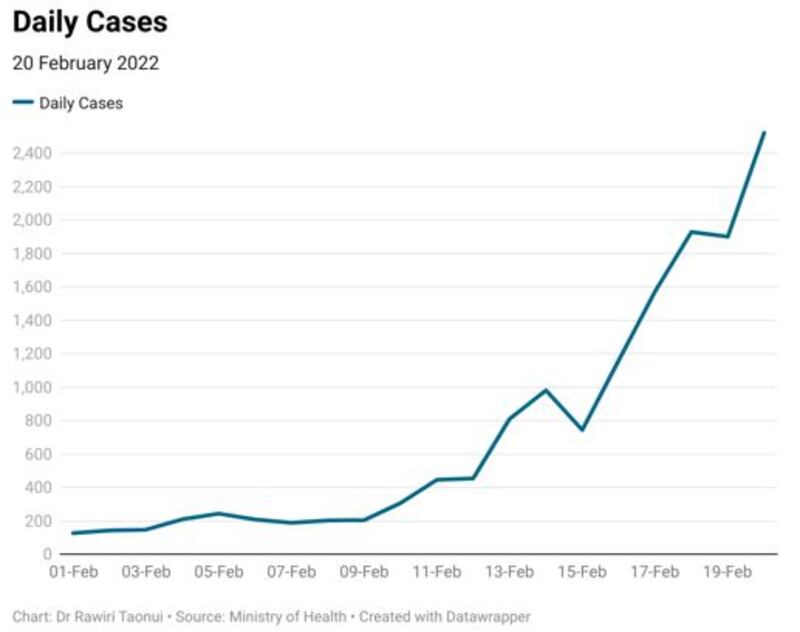
The Omicron-driven surge is rising exponentially. From 148 new cases on February 1, it took 15 days for cases to pass 1,000. This number has doubled in four days.
There are 100 people in hospital, none in ICU and no deaths to report.
There are a total of 14,259 active cases, 15,785 in the community and 474 in MIQ.
Cases by ethnicity
Pacific peoples had the highest number of cases for the 10th day in a row with 1,044.
Māori remain the lowest number of new daily cases of the four largest ethnic groups with 314.
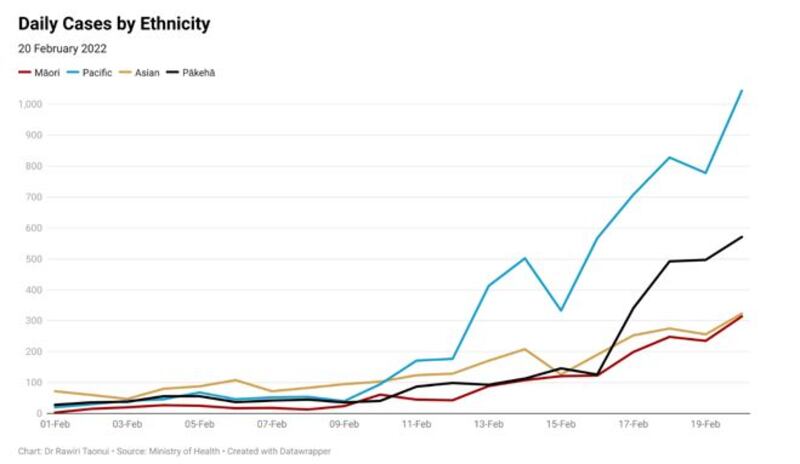
Māori have the lowest active cases of the four major ethnic groups.
Māori remain the highest number of hospitalisations and deaths.
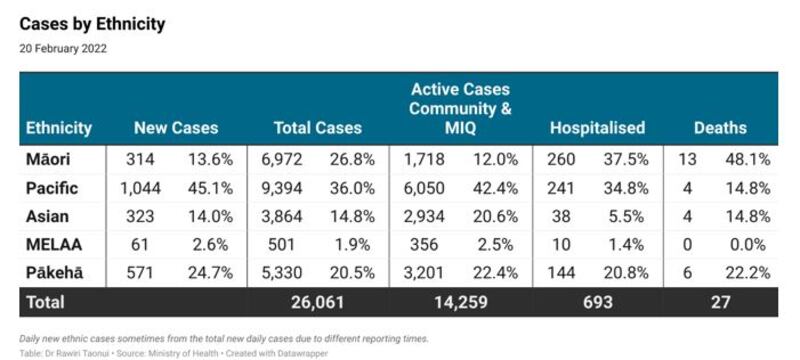
Māori numbers are steadily rising and will pass those in the Asian community over the coming week.
Cases by DHB
With one new case on the West Coast, the Omicron outbreak has now reached all DHBs.
As Omicron spreads further Northland and many of the DHBs in the central North Island will pass 500 and then 1,000 active cases. In March, many DHBs will go purple (1,000+) and several red (5,000+). Others will go further.
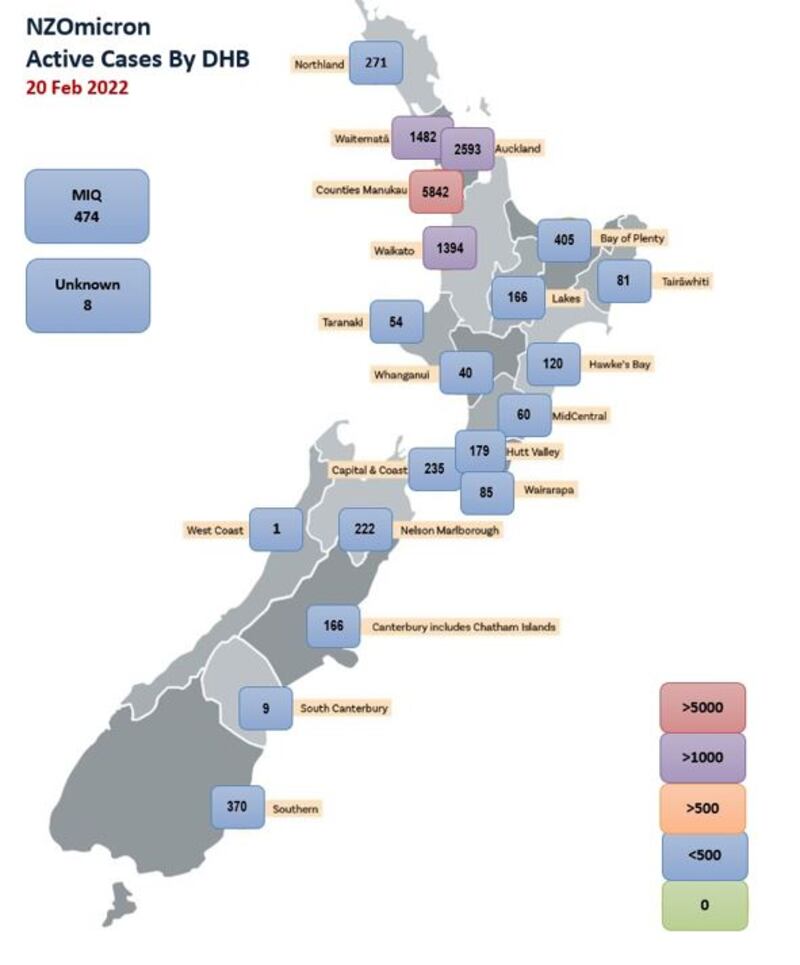
Māori total and full vaccinations
Whānau Ora, iwi and other providers have closed a mid-September gap of 25.2% between total Māori vaccinations and the national rate, to 9.3% (Māori 80.4%, national rate (91.8%), including vaccinating over 114,000 Māori since November 1.
Some 80.4% of Māori aged over 12yrs are fully vaccinated. The gap to the national average is 11.4 percentage points.

Māori uptake of first and second vaccinations has stalled between 10% and 20% in different DHBs as the rollout reaches significant resistance. The slowdown is higher in the upper North Island and less in the lower North Island and South Island.
Māori booster vaccinations
While the lower uptake of first and second vaccinations reflects a final wall of resistance, the vaccinated majority is pursuing booster vaccinations at a high rate.
Māori (45.6%) are still 18.9 percentage points behind the national rate (64.5%) for boosters. This gap is closing. Since February 4 when the government reduced the wait from four to three months, Māori booster uptake has risen 53.8% compared to 45.7% for Pākehā.
The freedom protests
Between 1800 and 1915, there was a significant anti-vax community in New Zealand. Much of its focus was on the smallpox vaccine. Anti-vaxxers spread misinformation that the vaccination caused leprosy, other diseases, and death and that it was a plot against the freedoms of the population. Many Māori, mistrustful of the government after the Pākehā wars on Māori and the taking of Māori land, supported the anti-vax sentiment. Previously high Māori smallpox vaccination rates fell away.
In 1913, a recently arrived American missionary infected several Māori at a gathering in Northland. When the delegations returned home, they took the infection with them. More than 200 Māori died.
There is no doubt that several of the current so-called Freedom camp-ins around the country will become super-spreader events. When they return home, they will take Omicron with them.
Noho haumaru.
Dr Rawiri Taonui.

